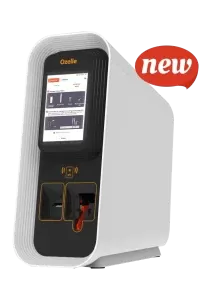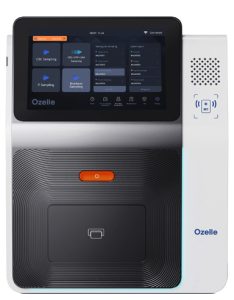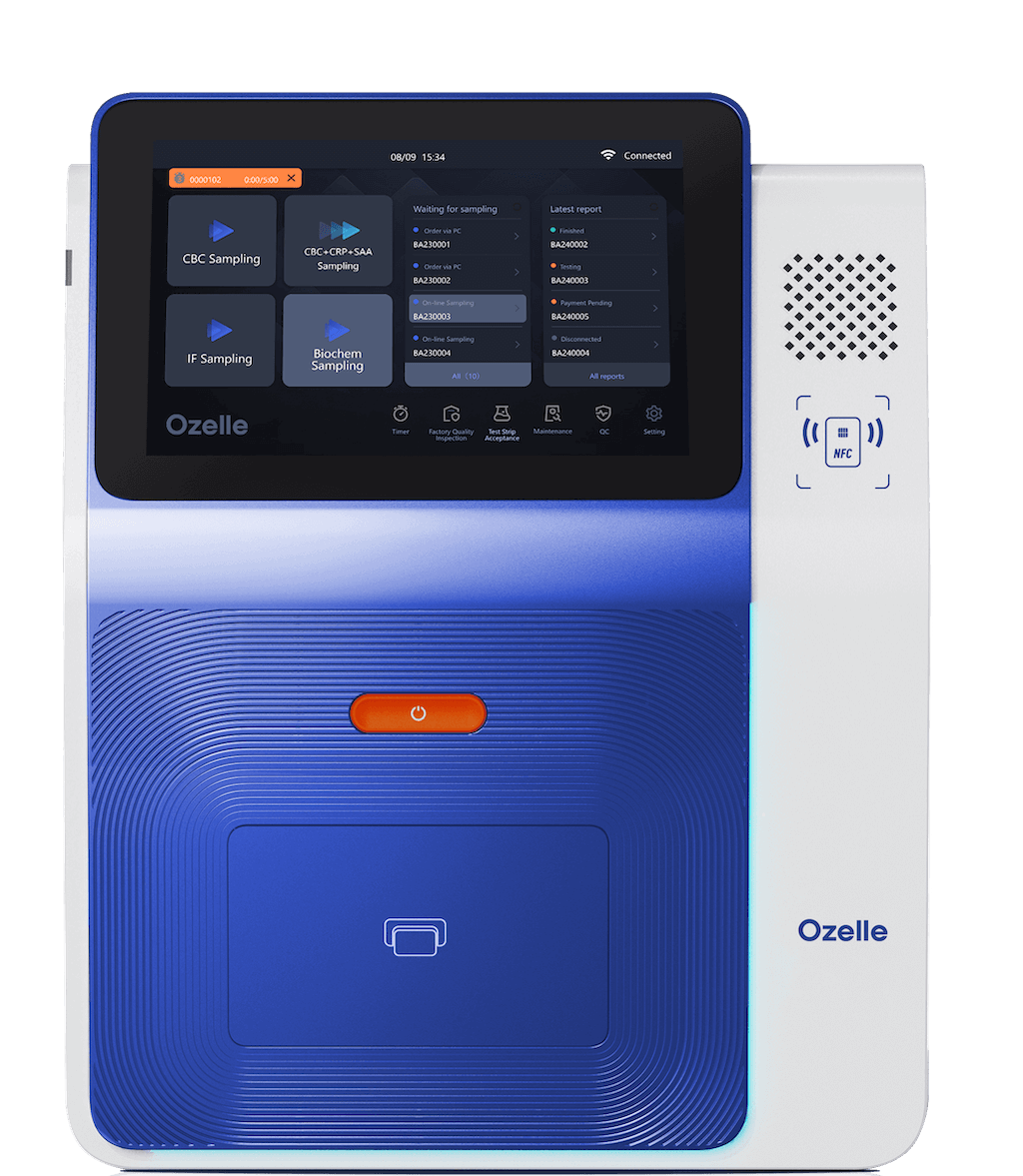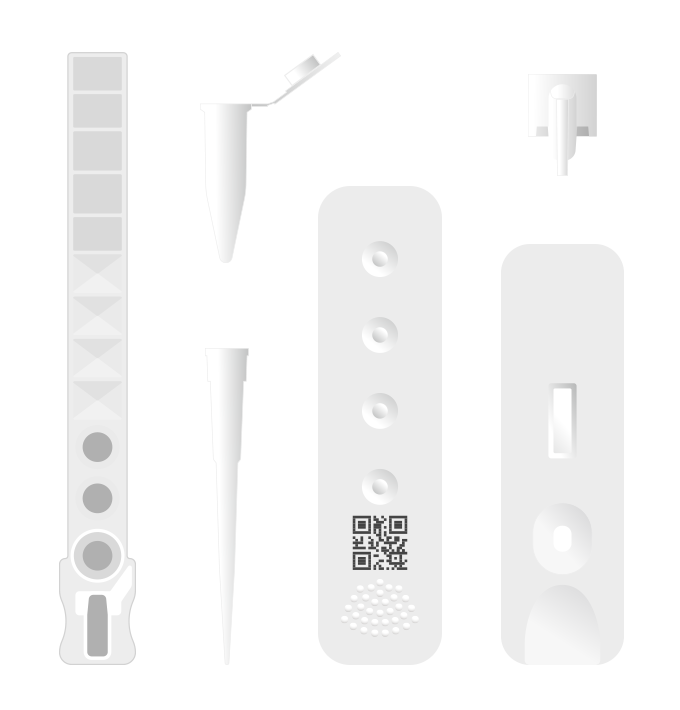The global hematology analyzer market is experiencing unprecedented transformation. Valued at $4.33 billion in 2025 and projected to reach $7.28 billion by 2034, this market reflects a fundamental shift in how laboratories approach blood diagnostics. At the heart of this evolution lies a critical convergence: artificial intelligence meets complete blood morphology (CBM), and manufacturers like Ozelle are leading the charge to democratize diagnostics globally.
But what does this transformation mean for OEM blood analyzer manufacturers, distributors, and healthcare providers? How can integration partners capitalize on this revolution? Let’s explore the trends, technologies, and opportunities defining the next generation of blood diagnostics.
The Evolution of Blood Diagnostics: From Counting to Understanding
For over a century, blood analysis has followed a predictable trajectory:
-
1852: Microscopy reveals blood cells
-
1950s: Impedance technology enables automated counting
-
1970s: Flow cytometry introduces rapid, multi-parameter analysis
-
2017 onwards: AI + Cell Morphology integrates intelligence into imaging
Traditional Complete Blood Count (CBC) analyzers excel at quantification—delivering precise counts of red blood cells, white blood cells, hemoglobin, and platelets. Yet this numerical snapshot tells only part of the clinical story. What about cell morphology? The subtle shape variations, cytoplasmic granularity, and nuclear irregularities that reveal early pathological changes?
Historically, interpreting these morphological details required manual microscopy by highly trained hematologists—a process that is time-consuming, subjective, non-scalable, and increasingly impractical as laboratory staffing shortages plague healthcare systems worldwide. Vacancy rates in U.S. labs average 18%, creating bottlenecks exactly where efficiency is most critical.
This is where OEM innovation becomes transformative.
The AI + Complete Blood Morphology Revolution
Modern OEM blood analyzers are fundamentally different from their predecessors. Consider Ozelle’s flagship products, which represent this new paradigm:
AI-Powered Cell Recognition
Ozelle’s algorithms, trained on over 40 million expert-annotated clinical samples, can classify blood cells with expert-level accuracy. These systems identify not only standard differential counts (neutrophils, lymphocytes, monocytes, eosinophils, basophils) but also advanced cell types including:
-
Reticulocytes (RET)
-
Nucleated neutrophils (NST, NSG, NSH)
-
Abnormal lymphocytes (ALY)
-
Platelet aggregates (PAg)
The recognition system was honored at the 2022 World Artificial Intelligence Conference (WAIC), validating its clinical significance.
High-Definition Optical Imaging
OEM manufacturers are integrating precision optics—such as SwissOptic® customized lenses with 4-megapixel resolution and 50 fps capture—to preserve complete morphological detail. Positional repeatability accuracy of <1 μm ensures cellular structures are captured with consistency comparable to expert manual microscopy, but at machine speed.
Fully Automated Workflows
The breakthrough is automation that truly simplifies:
-
Sample collection and loading: 30–60 µL capillary or venous blood
-
Automated staining and preparation: No manual pipetting or slide preparation
-
AI analysis and reporting: Results in 6 minutes or less
-
Maintenance-free operation: Single-use cartridge design eliminates liquid pipelines, reducing contamination risk and maintenance overhead
Market Trends Driving OEM Adoption
The Shift to Decentralized Diagnostics
Healthcare is moving beyond centralized reference laboratories. Point-of-care testing (POCT) analyzers are expanding rapidly, with the segment projected to grow fastest among all hematology analyzer categories through 2034.
Why?
-
Faster clinical decision-making at the bedside
-
Reduced “loss to follow-up” in primary care and rural settings
-
Lower operational burden on central labs
-
Accessibility in resource-limited regions
Compact OEM analyzers like Ozelle’s EHBT-25 (weighing just 8.1 kg) are designed specifically for this decentralized ecosystem—fitting seamlessly into clinics, ambulatory care centers, and even mobile diagnostic units.
AI Integration as a Competitive Differentiator
The 2024–2034 forecast explicitly highlights AI and machine learning integration as a growth driver, particularly for:
-
Automated morphology interpretation
-
Quality control and result validation
-
Reduced manual review rates
Laboratories using AI-enhanced systems report:
-
>50% reduction in manual review time (e.g., Scopio Labs’ platforms integrated with major manufacturers)
-
Lower error rates in abnormal cell detection
-
Improved staff efficiency, allowing technicians to focus on complex cases requiring expert review
Multi-Functional Integration
The market is shifting from single-purpose analyzers to integrated diagnostic platforms. Rather than separate hematology, immunoassay, and biochemistry instruments, modern OEM solutions combine:
-
7-diff CBC with morphology
-
Immunofluorescence assays (hormones, cardiac markers, infectious disease antibodies)
-
Dry-chemistry biochemistry (glucose, lipids, kidney function, liver function)
-
Urine and fecal analysis
Example: Ozelle’s EHBT-50 consolidates four methodologies into one device, providing 37+ test parameters while maintaining the footprint and cost-structure of traditional CBC analyzers.
This integration is driving adoption particularly in:
-
Mid-sized hospitals
-
Third-party diagnostic laboratories
-
Primary healthcare centers in emerging markets
-
Veterinary clinics (e.g., Ozelle’s EHVT-50 for animal diagnostics)
Regional Growth Dynamics
While North America dominates with ~41% market share, Asia-Pacific is emerging as the fastest-growing region (expected highest CAGR through 2034). Key drivers:
-
Rapid healthcare infrastructure expansion
-
Government investment in diagnostic capabilities
-
Rising middle class demanding quality healthcare
-
Lower cost-to-deploy models favored over enterprise systems
This represents a massive opportunity for OEM manufacturers positioned in emerging markets. Indonesia, India, Southeast Asia, and Latin America are prioritizing point-of-care diagnostics as a bridge between centralized labs and primary care.
The Business Case for OEM Blood Analyzers
For Distributors and Integrators
Partnering with innovative OEM manufacturers creates compelling value:
-
Portfolio Differentiation: In mature markets where CBC has commoditized, AI-powered morphology analysis creates a new competitive category. Customers perceive tangible clinical value beyond cost.
-
Multi-Vertical Expansion: A single platform serves:
-
Human diagnostics (hospitals, clinics, labs)
-
Veterinary medicine (growing market segment)
-
Research institutions
-
Pharmacy-based screening programs
-
-
Reduced Service Burden: Maintenance-free design with software-updatable algorithms eliminates technician-intensive service calls. Distributors can scale support without proportional cost increases.
-
Recurring Revenue: Consumable cartridge design ensures predictable, sustainable consumables revenue stream beyond initial instrument sales.
For Healthcare Providers
The clinical and operational case is equally compelling:
-
Improved Diagnostic Accuracy: Morphology data catches early pathological changes missed by traditional CBC. Early disease detection improves patient outcomes.
-
Reduced Turnaround Time: 6-minute results vs. hours in centralized labs accelerates clinical decisions, particularly in emergency settings.
-
Lower Total Cost of Ownership:
-
Maintenance-free systems eliminate service costs
-
Single-use reagents prevent contamination and reduce waste
-
Room-temperature storage simplifies inventory management
-
Reduced staffing requirements due to automation
-
-
Scalability: Compact footprint and ease of operation enable scaling diagnostic capacity without proportional increases in space or expertise.
For Manufacturers
OEM leadership in this space offers strategic advantages:
-
IP Protection: Advanced algorithms and imaging systems create barriers to entry
-
Clinical Validation: Recognition at international conferences (e.g., WAIC) builds trust and credibility
-
Global Reach: With 50,000+ units installed worldwide serving 40+ million patients annually, established OEM players like Ozelle have demonstrated proof-of-concept at scale
Key Challenges OEM Manufacturers Must Address
Regulatory Complexity
FDA clearance and CE marking timelines remain lengthy, particularly for AI-integrated devices. Manufacturers must balance innovation velocity with rigorous clinical validation. Multi-center trials across diverse geographies are increasingly expected.
Cost Barriers in Emerging Markets
Advanced OEM systems with AI integration command premium pricing ($30,000–$80,000+ per unit). While justified by operational efficiency and clinical value, adoption in low- and middle-income countries remains challenged by budget constraints.
Solution: Tiered product portfolios (e.g., EHBT-25 at entry-level pricing vs. EHBT-75 for premium applications) democratize access while maintaining margin structure.
Data Security and Interoperability
As analyzers become connected IoT devices transmitting morphology images and patient data, cybersecurity and privacy compliance (GDPR, HIPAA) become critical. Seamless integration with Laboratory Information Systems (LIS) and Hospital Information Systems (HIS) is increasingly mandatory.
Training and Change Management
Shifting workflows from manual microscopy to AI-assisted diagnostics requires investment in user training. Over-reliance on algorithm interpretation without expert validation poses clinical risks.
The Opportunities Ahead
Emerging Applications
-
Precision Medicine: Morphology data combined with molecular biomarkers enables patient-stratified treatment protocols
-
Remote Diagnostics: Full-field digital morphology imaging enables expert consultation from anywhere, expanding diagnostic reach to underserved regions
-
Chronic Disease Management: Portable analyzers in pharmacies and community centers enable routine monitoring of anemia, diabetic complications, and infection status
-
Veterinary Diagnostics: The veterinary segment represents an underserved market with similar clinical needs—opportunities for species-specific customization
Technology Integration
-
Edge AI: On-device processing ensures data security while enabling real-time interpretation
-
Cloud Collaboration: Centralized repositories of morphology images enable best-practice sharing, continuous algorithm improvement, and expert consultation networks
-
IoT Integration: Real-time dashboards tracking device utilization, reagent consumption, and predictive maintenance
-
Mobile-First Design: Companion apps enabling clinicians to review results and consult remotely
Conclusion: The Future Belongs to Intelligent, Connected Diagnostics
The OEM blood analyzer market is at an inflection point. The next decade will belong to manufacturers who successfully combine:
-
Clinical Innovation: AI-powered morphology analysis that delivers actionable insights beyond traditional CBC
-
Operational Simplicity: Maintenance-free, single-use, intuitive-to-operate systems
-
Global Accessibility: Tiered pricing and support models enabling adoption across income levels and geographies
-
Connected Intelligence: IoT-enabled devices that continuously learn and improve
Ozelle and other forward-thinking manufacturers are demonstrating that this convergence is not theoretical—it’s operationally viable at scale. With 50,000+ units installed and over 40 million patient samples analyzed, the AI + CBM paradigm is already reshaping diagnostics in hospitals, clinics, and veterinary practices worldwide.
For distributors, integrators, and healthcare providers, the strategic imperative is clear: Embrace intelligent blood diagnostics now, or risk commoditization in an evolving market. The future of diagnostics is not just faster or cheaper—it’s smarter, more connected, and accessible to everyone, everywhere.
About Ozelle
Founded in Silicon Valley in 2014 and now headquartered in Frankfurt, Germany, Ozelle is a global leader in AI-powered diagnostic innovation. The company combines advanced machine vision and artificial intelligence to deliver intelligent blood diagnostics through Complete Blood Morphology (CBM) technology. With over 500 employees worldwide (60% in R&D), Ozelle has installed 50,000+ analyzers serving clinicians across six continents, processing over 40 million patient samples annually.
Learn more: www.ozellemed.com | info@ozellepoct.com
This article was prepared based on current market data, regulatory insights, and Ozelle’s position as an innovator in OEM blood analyzer technology. Market figures sourced from 2024–2025 industry forecasts by Precedence Research, Intel Market Research, and related healthcare intelligence providers.





